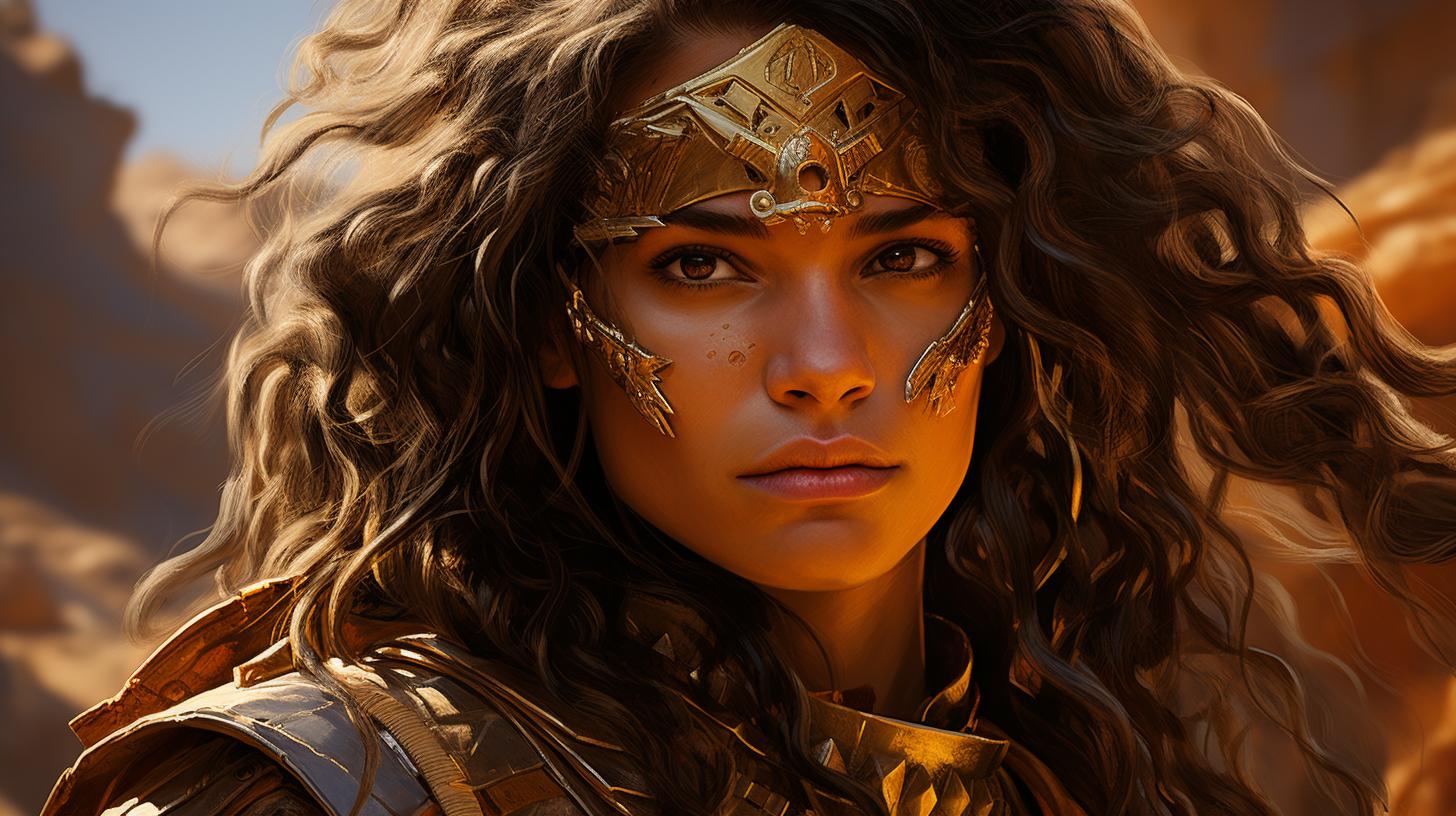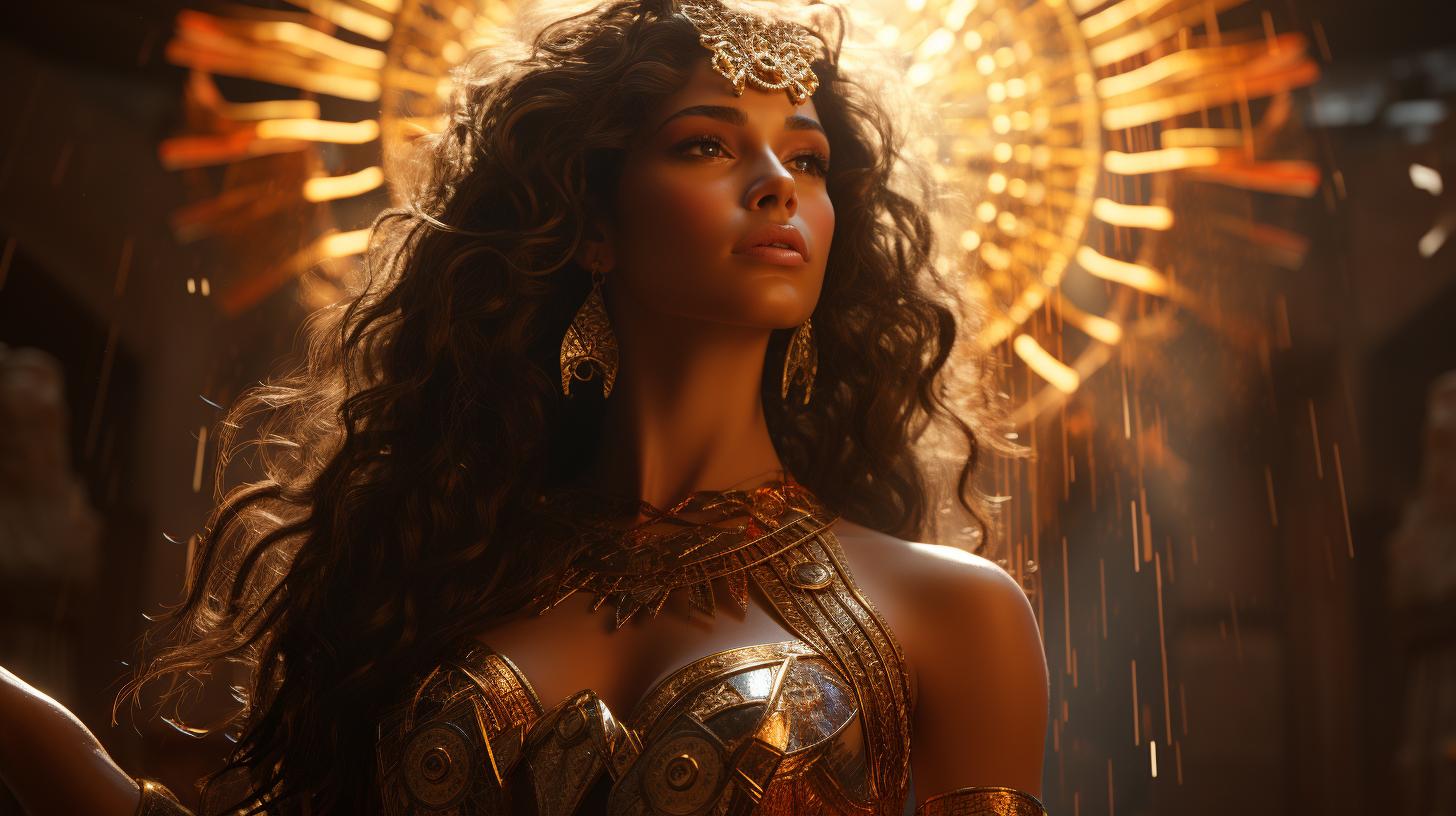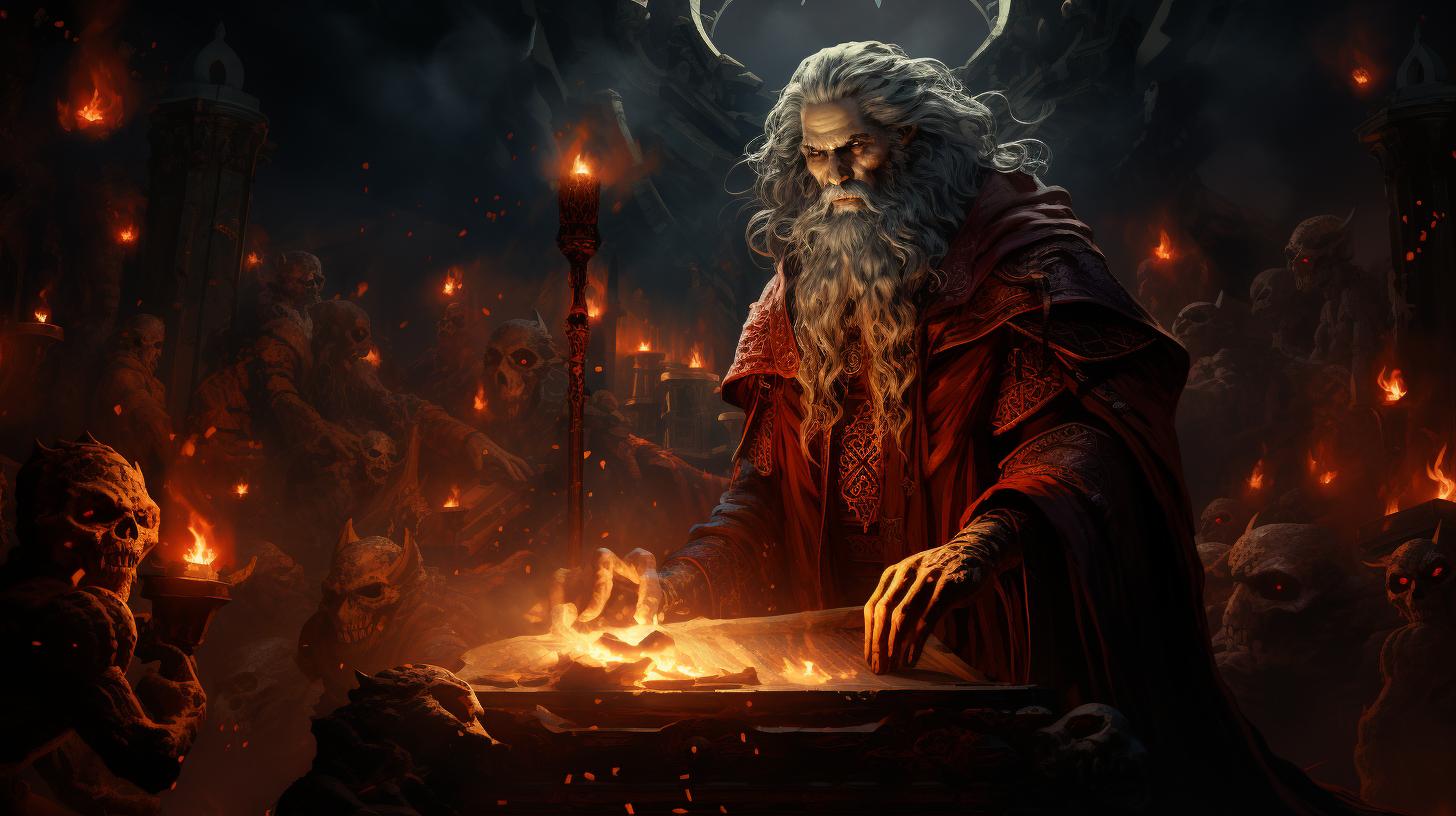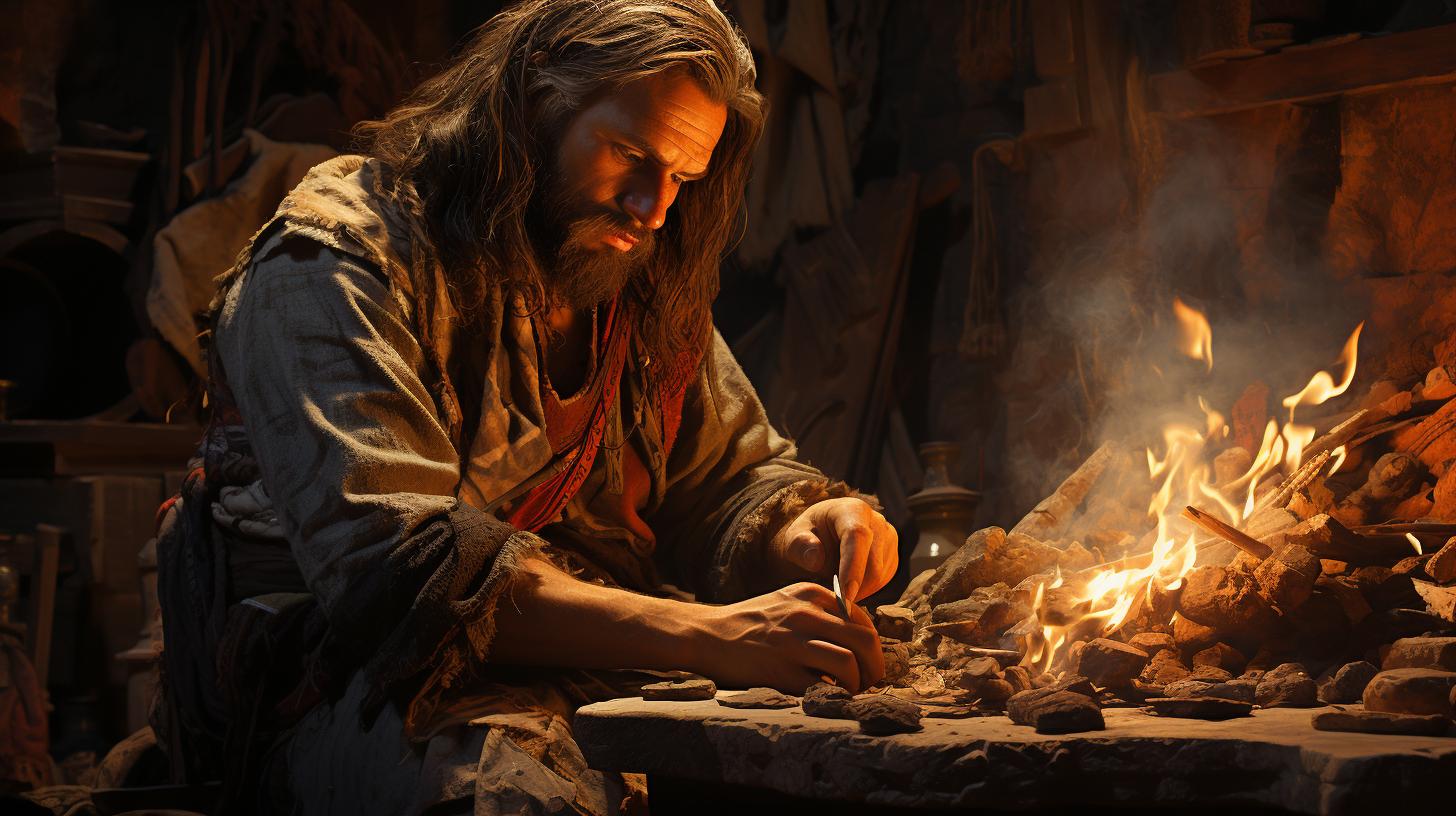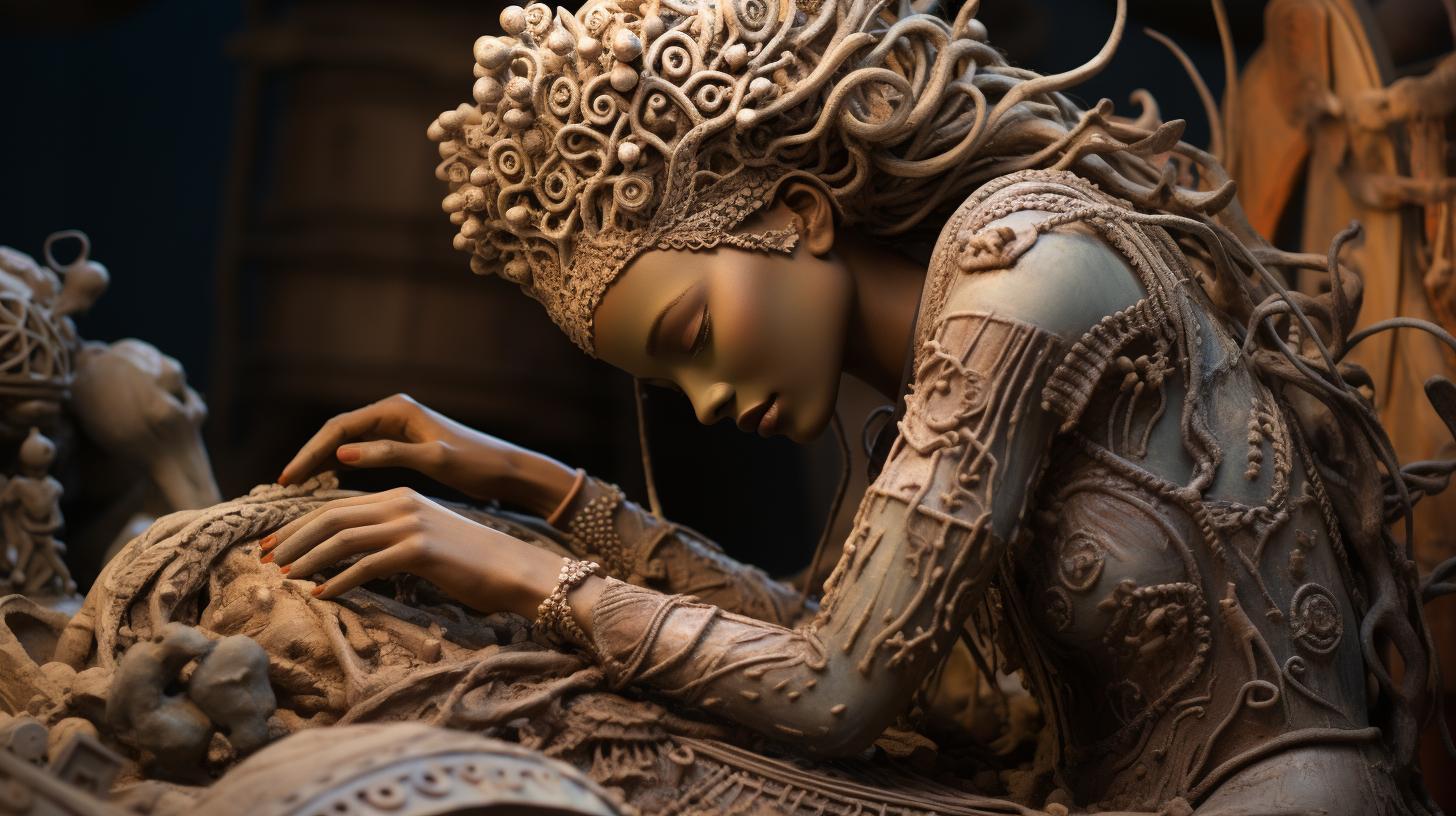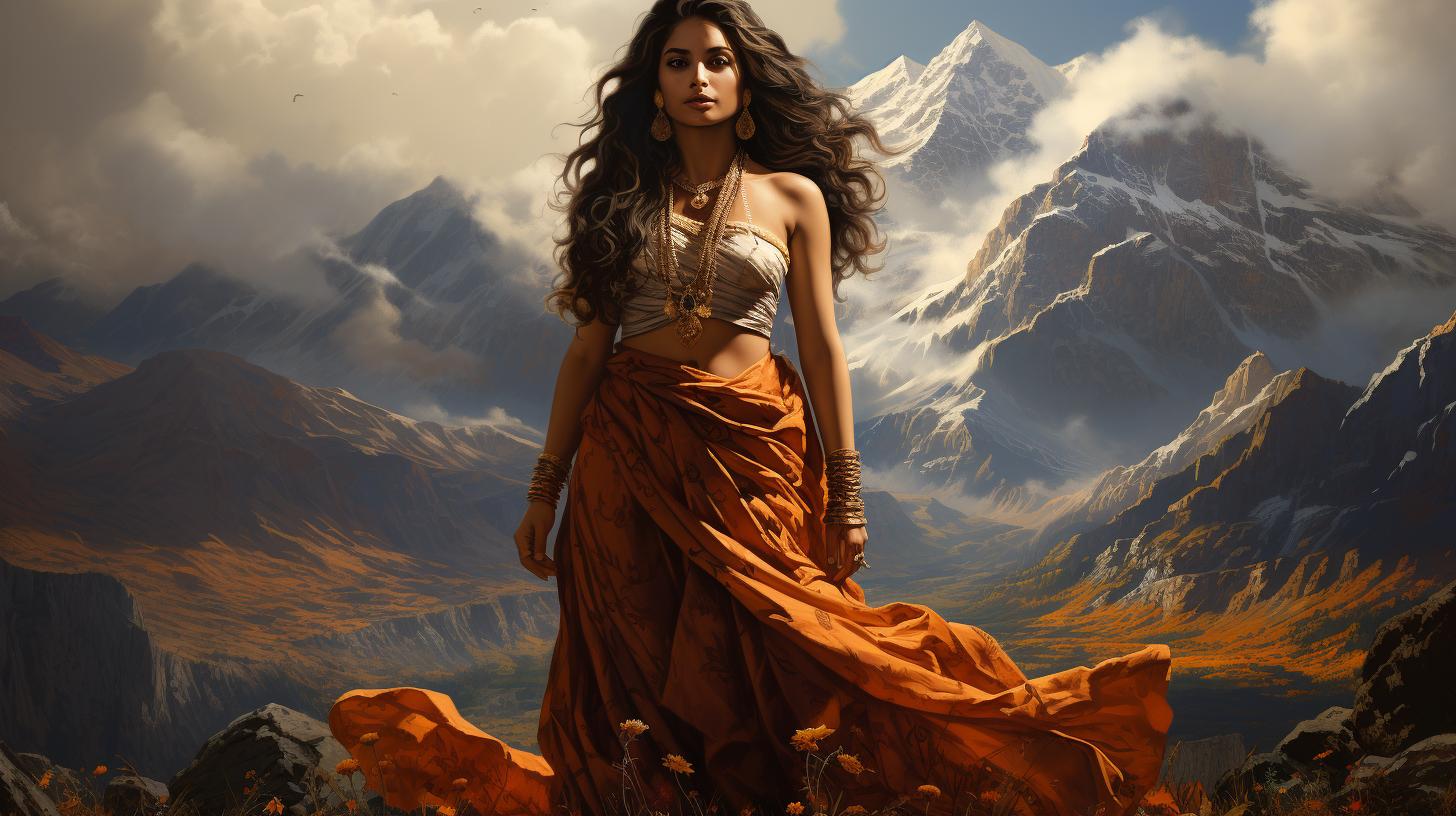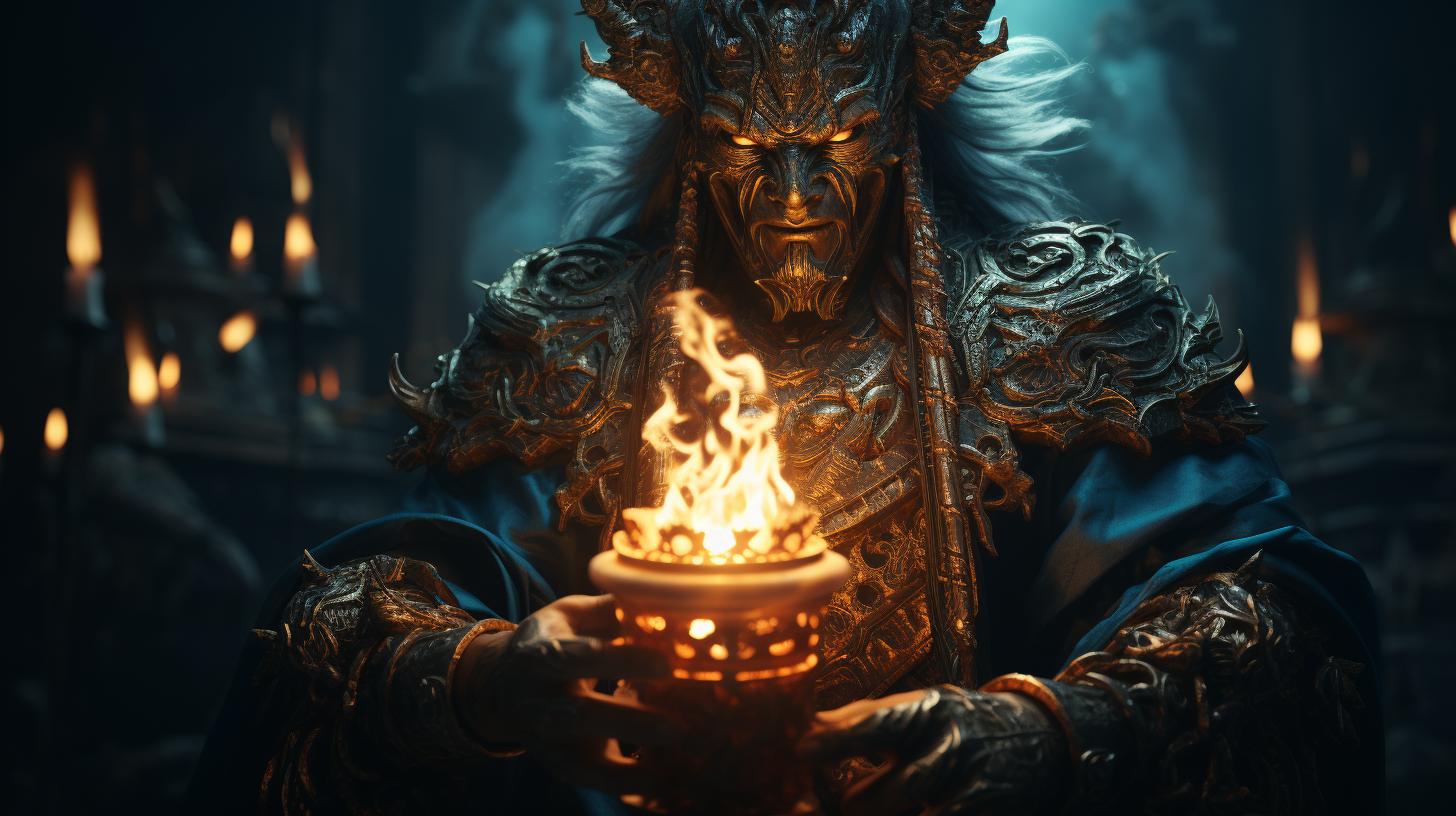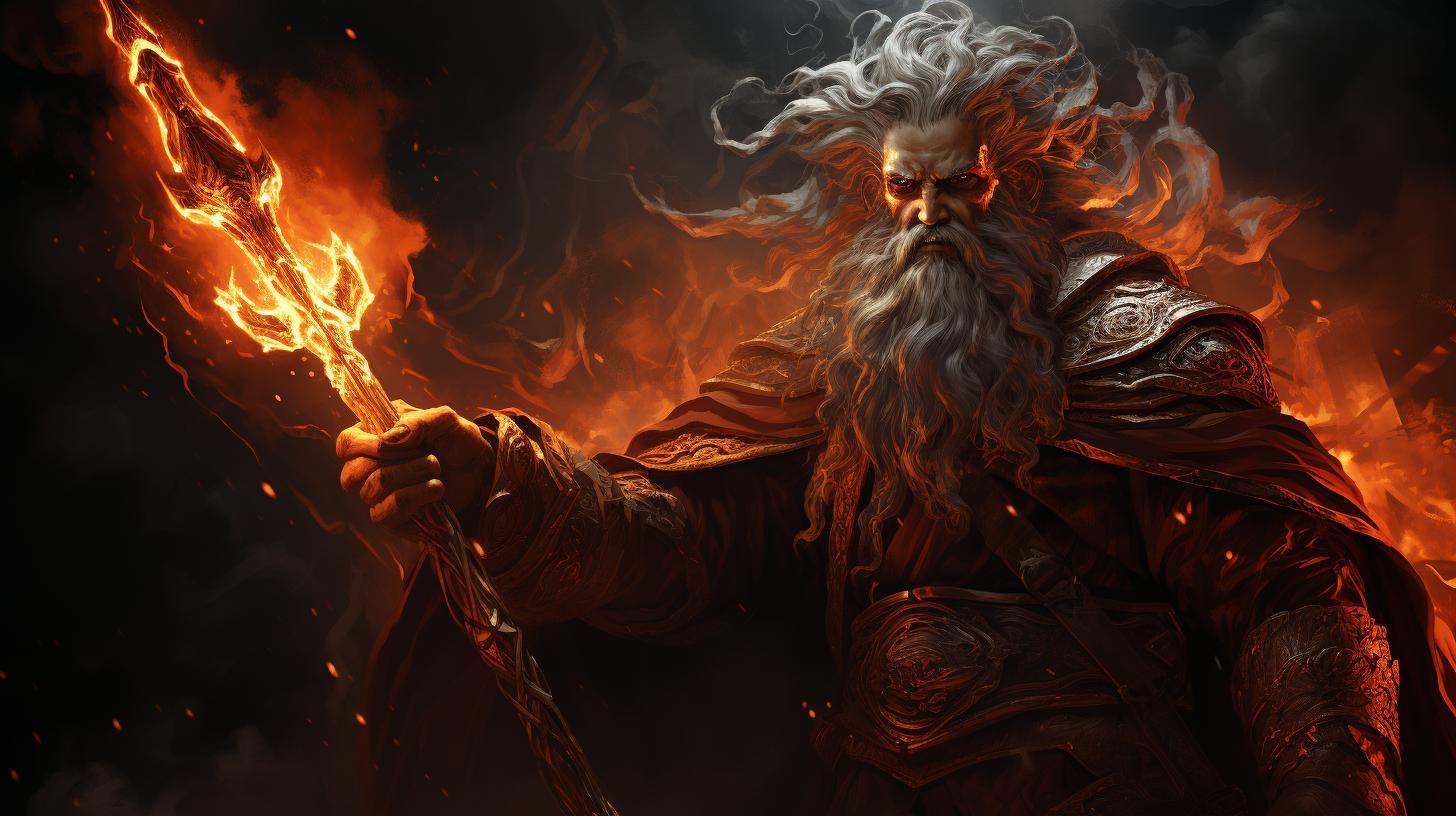Shara God: Unveiling the Divine Warrior and Agricultural Deity
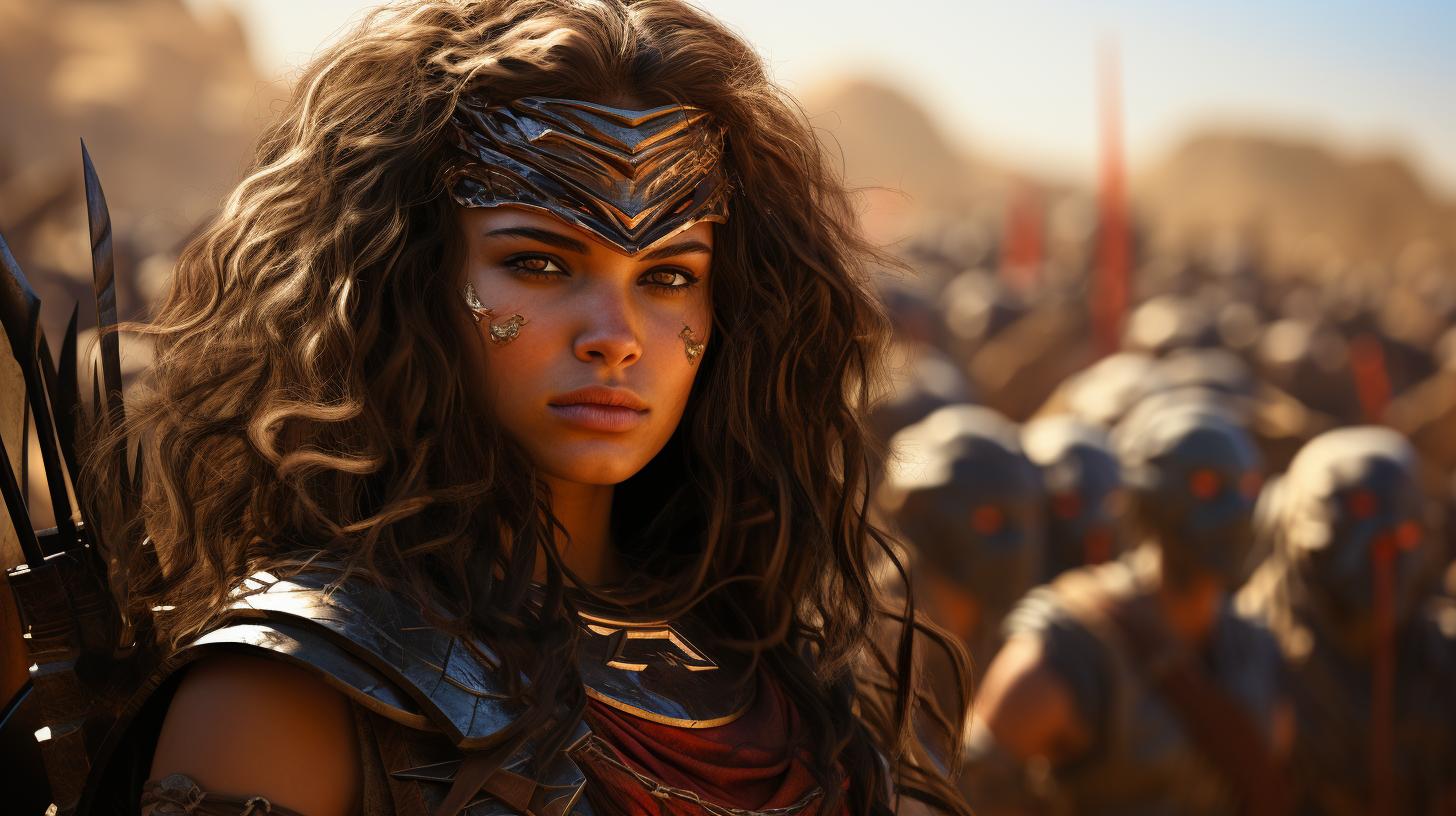
Shara god is a prominent deity in the ancient city of Umma and its surroundings. Associated with agriculture, animal husbandry, and warfare, Shara held a significant position in Mesopotamian society.
From his role in Sumerian myths, such as the Descenso of Inanna to the Underworld and the saga of Anzu, to his worship in temples and ziggurats, Shara’s influence was felt across various cities including Girsu, Nippur, and Ur.
Despite the decline of Umma’s political power, Shara’s legacy and enigmatic origins continue to captivate scholars studying Mesopotamian religion.
The Origins of Shara God
Shara god, the principal deity of Umma and its surrounding regions, has intrigued scholars with his mysterious origins. While his original name and etymology remain unknown, some speculate that the Acadian term ‘šārum,’ which means ‘wind,’ might have been reinterpreted as his name.
Despite this uncertainty, Shara’s significance in Sumerian mythology is undeniable.
As the son of Inanna of Zabalam and an unknown father, Shara’s divine lineage is enigmatic. His initial wife was Ninura, but later, he became associated with Usaḫara or Kumulmul.
Shara’s close connection with Inanna is notable, as evidenced by his appearance in the myth of the Descent of Inanna to the Underworld, where he mourns her temporary death.
Shara also plays a role in the myth of Anzu but refuses to engage in combat against the monstrous creature.
These myths provide glimpses into Shara’s multifaceted nature as a divine warrior and protector, associated with both agricultural prosperity and warfare.
While his origins remain shrouded in mystery, Shara’s influence extended beyond Umma.
He was worshipped in other prominent cities, including Girsu, Nippur, and Ur. Throughout Mesopotamian history, the cult of Shara encompassed various priests, priestesses, and specialists engaging in purification rituals, singing, flute playing, and snake charming.
Despite Umma’s waning political influence, the legacy of Shara god endures, leaving us to ponder the intricate religious tapestry of ancient Mesopotamia and the fascinating origins of this enigmatic deity.
Shara God in Sumerian Mythology
In Sumerian mythology, Shara god played significant roles in various myths and legends.
Let’s explore the fascinating aspects of this divine figure’s involvement.
Shara’s Relationship with Inanna
Inanna, the goddess of love, fertility, and war, shared a unique connection with Shara. Their relationship showcased both a divine partnership and a close familial bond, deepening the complexities of their intertwined roles in Sumerian mythology.
Shara’s Role in the Descenso of Inanna to the Underworld
One of the most famous myths involving Shara is the “Descent of Inanna to the Underworld.” In this epic tale, Shara is among the mournful servants witnessing Inanna’s temporary death. His presence highlights the emotional depth and divine support surrounding Inanna’s transformative journey.
Shara in the Myth of Anzu
Shara also appears in the myth of Anzu, where he refuses to engage in combat against the formidable monster of the same name. This encounter reflects Shara’s divine prowess as a warrior and his strategic importance in defending against powerful adversaries.
Through these captivating narratives, Shara god emerges as a multifaceted deity with intricate relationships and significant roles in the Sumerian pantheon.
Shara God in Mesopotamian Society
Shara God played a significant role in the ancient Mesopotamian society, particularly in Umma and surrounding cities. Let’s explore Shara’s association with Umma and its neighboring settlements, the worship of Shara in temples and ziggurats, and the decline of Shara’s cult and political influence.
Shara’s Association with Umma and Surrounding Cities
Shara was deeply intertwined with Umma and held a revered position in the city’s religious and cultural life. His influence extended beyond Umma, as he was also worshipped in other prominent settlements like Girsu, Nippur, and Ur.
The people of these cities recognized Shara as a vital deity, seeking his blessings for agricultural prosperity and protection in times of war.
The Worship of Shara in Temples and Ziggurats
The devotion to Shara was expressed through elaborate rituals and ceremonies conducted in his temples and dedicated ziggurats.
The main temple honoring Shara was the Emaḫ, located in KI.ANki near Umma. Additionally, the Sigkuršaga, a magnificent zigurat, was also erected in his honor. The clergy of Shara, including priests, priestesses, and specialists in purification, played essential roles in ensuring the practice of religious rites and maintaining the connection between the people and the divine.
The Decline of Shara’s Cult and Political Influence
Unfortunately, with the declining political power of Umma, the worship and prominence of Shara also diminished over time. As political dynamics shifted, other deities gained more prominence in the region, leading to a gradual decrease in the cult of Shara.
Nevertheless, the enduring legacy of Shara God and his multifaceted domains in agriculture, animal husbandry, irrigation, and warfare continue to fascinate historians and scholars studying the ancient Mesopotamian civilization.
The Attributes and Domains of Shara God
Shara god, the revered deity of Umma and its surrounding regions, encompassed a diverse array of attributes and domains, riding the line between divine warrior, agricultural patron, and irrigation overseer.
Shara as a Divine Warrior
Renowned for his martial prowess, Shara wielded power as a divine warrior. Admired for his courage and strength, he served as a prominent guardian and protector of his devotees, defending them against malevolent forces and rival deities.
Shara’s Connection to Agriculture and Animal Husbandry
Simultaneously, Shara held a vital role as an agricultural deity, deeply intertwined with the prosperity of crops, livestock, and the livelihoods of his worshipers. Farmers and herders looked to Shara for bountiful harvests, fertile pastures, and successful breeding.
Shara’s Involvement in Irrigation and Water Management
Recognized as the overseer of irrigation systems, Shara played a crucial role in managing the distribution of water in the fertile lands around Umma. His divine influence was believed to regulate the flow of rivers, ensuring the controlled flooding necessary for agricultural productivity.
Shara’s multifaceted nature, encompassing his divine warrior status, his agricultural patronage, and his involvement in water management, reinforced his integral position in the religious and societal fabric of ancient Mesopotamia.
The Enigmatic Name and Origins of Shara God
Shara god, the ancient deity revered in Umma and surrounding regions, still holds an air of mystery surrounding its name and origins.
Its original name and etymology remain unknown, leaving scholars to speculate on its true meaning. Some suggest that the term ‘šārum’, meaning ‘wind’ in Akkadian, may have been reinterpreted as the deity’s name.
This conjecture stems from the deity’s association with various natural phenomena such as winds and the life-giving force they bring.
Though the exact origins of Shara god are elusive, its powerful presence in Sumerian mythology cannot be denied.
As a divine figure associated with agriculture, animal husbandry, and irrigation, Shara’s importance in early societies is evident. Its alignment with revered goddesses like Inanna further adds to its enigmatic nature.
Shara god’s lineage, being the son of Inanna of Zabalam and an unknown father, adds another layer of intrigue.
As we explore the captivating world of Shara god, we delve into the enigmatic name and origins that continue to fascinate scholars and lovers of ancient Mesopotamian culture.
Unlocking the secrets behind Shara god’s existence brings us one step closer to understanding the rich tapestry of beliefs and practices that shaped the civilizations of the past.
Shara’s Consorts and Offspring
Shara god, the prominent deity of Umma, had several consorts throughout his divine existence.
These wives played significant roles in the mythology and worship surrounding Shara. Among his notable consorts were Ninura, Usaḫara, and Kumulmul.
Ninura, Usaḫara, and Kumulmul: Shara’s Wives
One of Shara’s early wives was Ninura. However, as time passed, Shara became associated with Usaḫara or Kumulmul, suggesting a shift in divine alliances and worship practices. The details of these unions remain shrouded in mystery, yet their importance is undeniable in understanding Shara’s divine presence.
Shara’s Lineage and Parentage
Shara’s lineage and parentage are sources of intrigue for scholars and followers alike. While his mother was the renowned Inanna of Zabalam, his father’s identity remains unknown. These ancestral connections link Shara to powerful deities and add depth to his role as a divine figure.
Exploring the consorts and offspring of Shara god sheds light on the intricate relationships and complexities within the pantheon of ancient Mesopotamian deities. By delving deeper into these divine unions, a clearer understanding of Shara’s divine nature emerges, captivating those seeking to comprehend the rich tapestry of Mesopotamian religion and mythology.
The Role of Shara God in Umma’s History
Lorem ipsum dolor sit amet, consectetur adipiscing elit. In the ancient city of Umma, Shara god held a significant presence during different periods of Mesopotamian history. Let’s explore Shara’s involvement during the Early Dynastic period and the Old Babylonian period.
Shara’s Presence during the Early Dynastic Period
During the Early Dynastic period, Shara god was revered as a powerful deity within the city of Umma. His association with agriculture, animal husbandry, and irrigation played a crucial role in sustaining the city’s economy and ensuring prosperity for its inhabitants.
Worshipped in temples and ziggurats, Shara was fervently venerated as the divine protector of Umma’s agrarian society.
Shara’s Importance in the Old Babylonian Period
In the Old Babylonian period, Shara’s significance expanded beyond Umma, gaining prominence in the broader Mesopotamian region. While Umma’s political influence waned during this time, Shara’s cult continued to flourish. His divine characteristics as a warrior and agricultural deity resonated with the needs and aspirations of communities throughout Mesopotamia, establishing Shara as a revered figure beyond his original domain.
Shara’s role during the Old Babylonian period exemplifies his enduring presence and adaptability within evolving Mesopotamian religious and societal contexts, solidifying his legacy as a prominent deity in the region.
Shara God in Art and Iconography
Artistic representations of Shara god provide valuable insights into the ancient Mesopotamian culture and religious beliefs.
Beautifully crafted statues and reliefs depict Shara in various forms, highlighting his multifaceted nature as both a divine warrior and an agricultural deity. These artistic depictions often showcase Shara’s distinctive attributes, such as his powerful physique, depicted through muscular body proportions and strong facial features.
In the iconography, Shara is commonly shown wearing a horned helmet, emphasizing his association with warfare. Additionally, he is often depicted holding a variety of symbolic objects, such as spears, bows, or shields, further emphasizing his role as a protector and warrior.
It is fascinating to observe how the artistic representations of Shara evolved over time, reflecting shifts in religious practices and cultural influences.
Furthermore, artistic representations also showcase Shara’s close connection to agriculture and irrigation.
Depictions of Shara can be found in agricultural scenes, where he is often depicted alongside plants, animals, and symbols associated with fertility and abundance. These artistic representations serve as powerful visual narratives, highlighting the crucial role Shara played in ensuring prosperous harvests and maintaining the delicate balance between humans and nature in ancient Mesopotamia.
Studying the art and iconography of Shara god provides valuable insights into the religious beliefs, societal values, and artistic traditions of ancient Mesopotamia, allowing us to further comprehend the significance and enduring legacy of this fascinating deity.
The Legacy and Influence of Shara God in Mesopotamian Religion
Shara god left an indelible mark on the religious landscape of ancient Mesopotamia. His multifaceted domain encompassed agriculture, animal husbandry, irrigation, and warfare, making him a crucial figure in the lives of the people.
Through his association with Umma and other cities like Girsu, Nippur, and Ur, Shara’s worship spread far and wide, drawing devotees who sought his blessings for bountiful harvests and protection in times of conflict.
The temples and ziggurats dedicated to Shara served as centers of religious and societal activities. The clergy, comprising priests, priestesses, and various specialists, performed rituals, purification ceremonies, and invoked Shara’s divine powers through chants and music.
Over time, however, the dwindling political influence of Umma led to a decline in the cult of Shara, marking a turning point in Mesopotamian religious practices.
Yet, Shara’s impact endured through the generations, resonating in the art and iconography of the region.
Sculptures, reliefs, and inscriptions depicted his warrior-like form and his nurturing role in the agricultural realm, immortalizing his significance in the collective memory of the ancient Mesopotamians.
The legacy of Shara god lives on, reminding us of the intricate interplay between religion, society, and the environment in the rich tapestry of ancient Mesopotamia.
.











